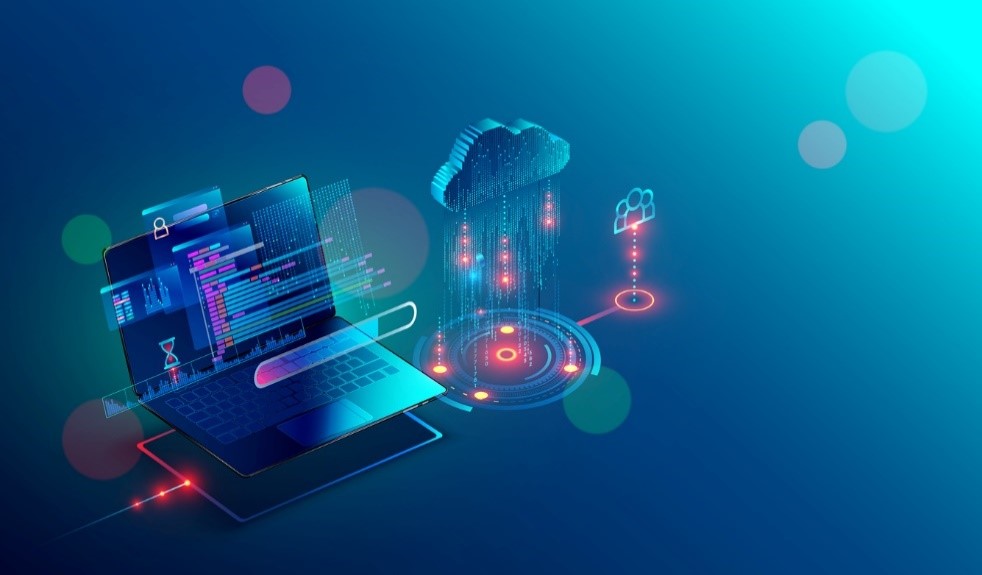
DaaS is the natural culmination of the cloud computing revolution, allowing workforces secure and easy access to workstations, software, content, and applications.
Desktop-as-a-Service (DaaS) is here. It’s the culmination of the cloud computing revolution of the past two decades, and it’s also a homecoming of sorts. The first computers, after all, were gigantic devices that required huge rooms and dedicated cooling systems to run. The only desktop they would have ever fit on would have belonged to one of the giants of myth and legend.
Soon those big computers became mainframes. Also, those mainframes supported hundreds, even thousands, of so-called dumb terminals. These terminals provided users with access to the mainframe programs they needed. So, accountants, airline reservation agents, engineers, and many other professionals were able to run the applications they needed to do their jobs more efficiently and effectively.
However, soon another revolution came to pass: the personal computing revolution. The relentless progress of technology had birthed computers that fit on a desk. These desktop computers soon became so powerful that they could run the same software the old mainframes could. Also, unlike mainframes, which slowed down when too many users were trying to access the system, these new computers were always running at full speed, their capabilities at the disposal of a single user.
So, the desktop computers took over, making more computing power available to individuals than ever. The desktops became so versatile that virtually every type of work was best done using a computer.
With all this computing power came complexity.
It wasn’t long before administering all these computers and keeping them up and running became a primary function of every organization. Where once the precursors of today’s IT departments had one computer with one main program to maintain, IT departments today have to manage hundreds or even thousands of machines, each running dozens of programs that can do everything from designing stationery to running a hedge fund.
This is complicated, time-consuming, and expensive. A company’s technology needs would take an ever-growing bite of its financial resources. But, without the tech, the work would never get done.
Enter The Cloud and its revolution.
Sometime around the dawn of the 21st century, The Cloud became a thing. First, there was cloud storage. Then came cloud-based, web-accessible application suites like Google Docs and Microsoft Office 365. Media distribution moved to the Cloud. It began with music on iTunes and evolved to streaming from audio services like Spotify, Pandora, and Apple Music. It was followed by video when Netflix made “binge-watching” a reality.
The advent of DaaS brings computing, from a management point of view, full circle. Terminals are back, but this time they’re anything but dumb, and The Cloud has replaced the mainframe.
Now The Cloud can be used to create virtual desktop computer installations and supply them to as many users as needed. This is the perfect marriage of the power of desktop computers and the ease of management provided by the model of “one mainframe, many clients on terminals.”
It’s a revolution that couldn’t have come at a better time, as IT departments face the daunting challenge of supporting far-flung mobile and remote workers on a variety of hardware platforms and operating systems. With DaaS, they can all be supplied with the right combination of software that will allow them to collaborate with their teammates, wherever they happen to be.
DaaS from Amazon End User Computing can transform a company’s IT infrastructure.
Amazon Web Services (AWS) is the largest provider of cloud services in the world. They’ve been at the forefront of the revolution since its founding in 2003. Now, with AWS End User Computing, they are providing the most comprehensive and easily managed set of DaaS tools available.
Here are the core services Amazon offers in its End User Computing suite to shift a company’s IT needs into The Cloud:
- WorkSpaces: Instead of IT having to configure each worker’s desktop or laptop with the software they need, WorkSpaces enables companies to provide easily configurable virtual workstations that users can access on their own devices.
- AppStream 2.0: An application-streaming service that enables central management of software and secure delivery to a browser on any computer.
- WorkLink: Secure cloud access to a company’s internal websites and web apps via mobile phones.
- WorkDocs: Secure, managed content creation, file collaboration and document management.
AWS End User Computing will empower IT departments with the tools and technologies to satisfy their organizations’ data-management needs and the easy scalability to help support your ongoing growth. Learn more by getting in touch with CloudHesive at 800-860-2040 or through our online contact form.



